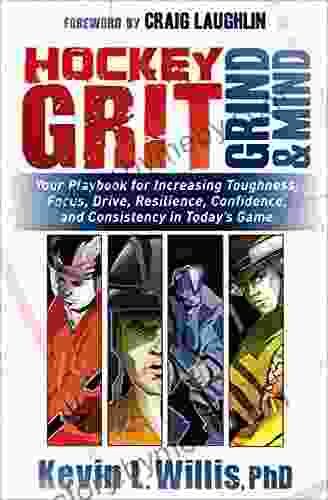Did America Kidnap The Lost Tribes Of Israel?

Unveiling the Truth: A Historical and Genetic Exploration
4.8 out of 5
| Language | : | English |
| File size | : | 5733 KB |
| Text-to-Speech | : | Enabled |
| Screen Reader | : | Supported |
| Enhanced typesetting | : | Enabled |
| X-Ray | : | Enabled |
| Word Wise | : | Enabled |
| Print length | : | 67 pages |
| Lending | : | Enabled |
For centuries, the whereabouts of the Lost Tribes of Israel has captivated historians, theologians, and scholars alike. Their enigmatic disappearance following the Assyrian conquest in the 8th century BC remains a mystery shrouded in biblical and historical accounts.
In recent decades, a compelling theory has emerged, suggesting that the Lost Tribes of Israel found refuge across the Atlantic Ocean, in the vast and uncharted lands that would become the United States of America.
Historical Connections
The historical connections between Native American tribes and the Lost Tribes of Israel are intriguing. Similarities in cultural practices, religious beliefs, and social structures have long been noted by anthropologists and historians.
For example, the Hopi tribe of Arizona has a creation myth that mirrors the biblical story of Noah's Ark. The Cherokee people of the southeastern United States observe a Passover-like ritual called the Green Corn Dance. And the Iroquois Confederacy, a powerful union of tribes in the northeast, shared a belief in a Great Spirit that resembles the Hebrew concept of God.
Furthermore, archaeological excavations have uncovered ancient artifacts in the Americas that resemble those found in ancient Israel, including pottery shards, stone tools, and remnants of religious symbols.
Genetic Evidence
In the past few decades, genetic research has shed new light on the possible connections between Native Americans and the Lost Tribes of Israel. Studies have identified genetic markers in certain Native American tribes that are also found in Jewish populations, suggesting a shared ancestral lineage.
For instance, researchers at the University of Oxford found that the Yaqui tribe of Mexico has a higher frequency of haplogroup X, a genetic marker common among Jewish males, than any other Native American group.
Additionally, a study by the University of California, Berkeley, revealed that the Navajo people of the southwestern United States share a significant amount of genetic ancestry with ancient Israelites.
Cultural Similarities
Beyond historical and genetic evidence, there are also striking cultural similarities between Native American tribes and the Lost Tribes of Israel. Both groups placed great importance on oral tradition, storytelling, and the preservation of their cultural heritage.
Moreover, both Native Americans and ancient Israelites had a strong reverence for their ancestors and believed in a spiritual connection to the land. They also shared a tradition of using totems and animal symbolism in their art and rituals.
Migration Patterns
The theory that the Lost Tribes of Israel migrated to the Americas is further supported by the plausible migration patterns of ancient peoples. During the same time period that the Lost Tribes disappeared from the historical record, there is evidence of significant transoceanic travel between Europe and the Americas.
Phoenician sailors, known for their maritime prowess, are believed to have reached the Americas around 600 BC. The Vikings also made several expeditions to the New World during the 11th and 12th centuries.
It is possible that the Lost Tribes of Israel, or a portion of them, could have joined these ancient voyagers and crossed the Atlantic, eventually settling in the Americas.
Archaeological Evidence
While archaeological evidence directly linking the Lost Tribes of Israel to Native American tribes is limited, there are some intriguing discoveries that lend credence to the theory.
In 1999, a stone tablet was found in Oklahoma that bears an inscription remarkably similar to the Paleo-Hebrew script used in ancient Israel. And in 2002, archaeologists excavating a site in Georgia unearthed a large stone structure resembling the Tabernacle described in the Bible.
These findings, while not conclusive, provide tantalizing hints that further research and exploration may yield more definitive answers.
America's Role
The question of whether America kidnapped the Lost Tribes of Israel is a complex one that cannot be answered with certainty. However, the evidence presented here suggests that the possibility is not as far-fetched as it may seem.
If the Lost Tribes of Israel did indeed find refuge in the Americas, it would be a testament to the resilience and adaptability of the human spirit. It would also add a remarkable chapter to the rich history of the United States, underscoring the nation's unique role as a melting pot of cultures and a beacon of hope for people around the world.
The quest to unravel the mystery of the Lost Tribes of Israel continues to captivate historians, researchers, and the general public alike. While definitive proof remains elusive, the intriguing connections between Native American tribes and the Lost Tribes of Israel, as explored in this article, are too compelling to ignore.
Whether or not America kidnapped the Lost Tribes of Israel may be a question that remains unanswered forever. However, the pursuit of this historical and genetic enigma provides us with a deeper understanding of our shared human heritage and the remarkable interconnectedness of cultures and civilizations.
4.8 out of 5
| Language | : | English |
| File size | : | 5733 KB |
| Text-to-Speech | : | Enabled |
| Screen Reader | : | Supported |
| Enhanced typesetting | : | Enabled |
| X-Ray | : | Enabled |
| Word Wise | : | Enabled |
| Print length | : | 67 pages |
| Lending | : | Enabled |
Do you want to contribute by writing guest posts on this blog?
Please contact us and send us a resume of previous articles that you have written.
 Book
Book Novel
Novel Page
Page Chapter
Chapter Text
Text Story
Story Genre
Genre Reader
Reader Library
Library Paperback
Paperback E-book
E-book Magazine
Magazine Newspaper
Newspaper Paragraph
Paragraph Sentence
Sentence Bookmark
Bookmark Shelf
Shelf Glossary
Glossary Bibliography
Bibliography Foreword
Foreword Preface
Preface Synopsis
Synopsis Annotation
Annotation Footnote
Footnote Manuscript
Manuscript Scroll
Scroll Codex
Codex Tome
Tome Bestseller
Bestseller Classics
Classics Library card
Library card Narrative
Narrative Biography
Biography Autobiography
Autobiography Memoir
Memoir Reference
Reference Encyclopedia
Encyclopedia Mike Mignola
Mike Mignola Lars Anderson
Lars Anderson Krissy Moehl
Krissy Moehl Kyle Simpson
Kyle Simpson Laura Wattenberg
Laura Wattenberg Margaret E Ward
Margaret E Ward Melissa Perri
Melissa Perri Phyllis Cross
Phyllis Cross Paul Orfalea
Paul Orfalea Leckie
Leckie Niall J Gannon
Niall J Gannon Leo Marks
Leo Marks Kyle Sullivan
Kyle Sullivan Jo Thomas
Jo Thomas Stephan Schiffman
Stephan Schiffman Lawrence J Walker Iii
Lawrence J Walker Iii Laura Dave
Laura Dave Paul Twitchell
Paul Twitchell Lisa Hopp
Lisa Hopp Roxy And Ben Dawson
Roxy And Ben Dawson
Light bulbAdvertise smarter! Our strategic ad space ensures maximum exposure. Reserve your spot today!

 Fyodor DostoevskyProven Methods For Using Digital Marketing Social Media Advertising And SEO
Fyodor DostoevskyProven Methods For Using Digital Marketing Social Media Advertising And SEO Henry Wadsworth LongfellowThe Best Pitcher in Baseball: An Unforgettable Literary Journey into the Life...
Henry Wadsworth LongfellowThe Best Pitcher in Baseball: An Unforgettable Literary Journey into the Life... Ernest PowellFollow ·16.6k
Ernest PowellFollow ·16.6k Harvey BellFollow ·14.6k
Harvey BellFollow ·14.6k John SteinbeckFollow ·5.4k
John SteinbeckFollow ·5.4k Walter SimmonsFollow ·13.8k
Walter SimmonsFollow ·13.8k Bobby HowardFollow ·6.1k
Bobby HowardFollow ·6.1k Alexandre DumasFollow ·3.5k
Alexandre DumasFollow ·3.5k Donald WardFollow ·15.1k
Donald WardFollow ·15.1k Amir SimmonsFollow ·10.5k
Amir SimmonsFollow ·10.5k

 Forrest Reed
Forrest ReedHockey Grit, Grind, Mind: The Ultimate Guide to Mental...
Hockey is a tough...

 Juan Rulfo
Juan RulfoUnlock Your Inner Artist: Embark on a Sketching Journey...
Embrace the Beauty of Nature Through Quick...

 Nathaniel Hawthorne
Nathaniel HawthorneSo You Think You're a Philadelphia Phillies Fan?
The Philadelphia Phillies are one of the most...

 Jeff Foster
Jeff FosterGoal-Based Investing: A Comprehensive Guide to Achieving...
Investing is not...

 Aleksandr Pushkin
Aleksandr PushkinGNOMEDOM: The Future Unfolds (Gnomedom Tales 1)
Escape into the enchanting world of Gnomedom...

 Branden Simmons
Branden SimmonsInternal Factors And Training Concepts For All Internal...
Internal arts, such as Tai...
4.8 out of 5
| Language | : | English |
| File size | : | 5733 KB |
| Text-to-Speech | : | Enabled |
| Screen Reader | : | Supported |
| Enhanced typesetting | : | Enabled |
| X-Ray | : | Enabled |
| Word Wise | : | Enabled |
| Print length | : | 67 pages |
| Lending | : | Enabled |








